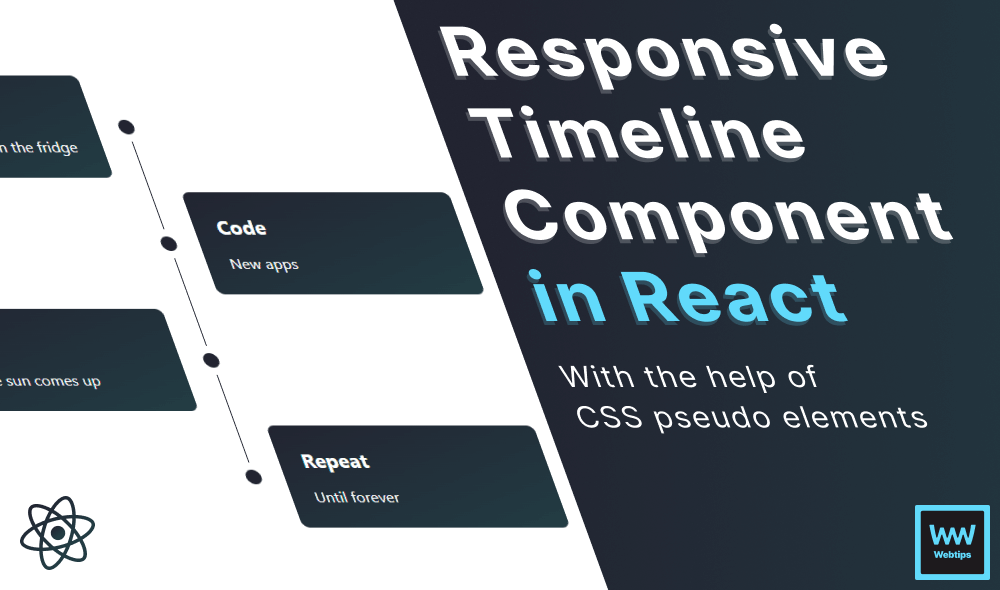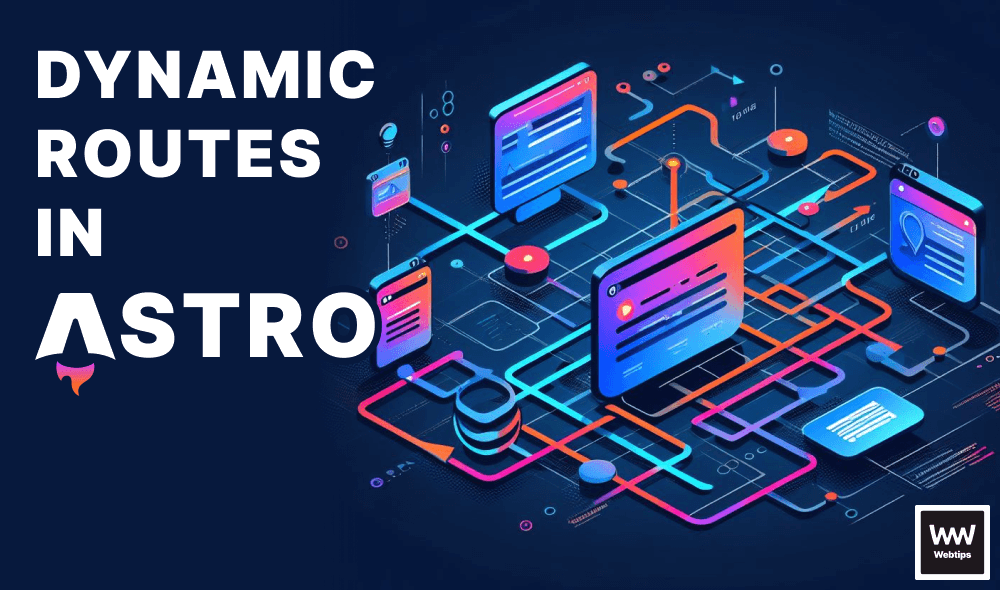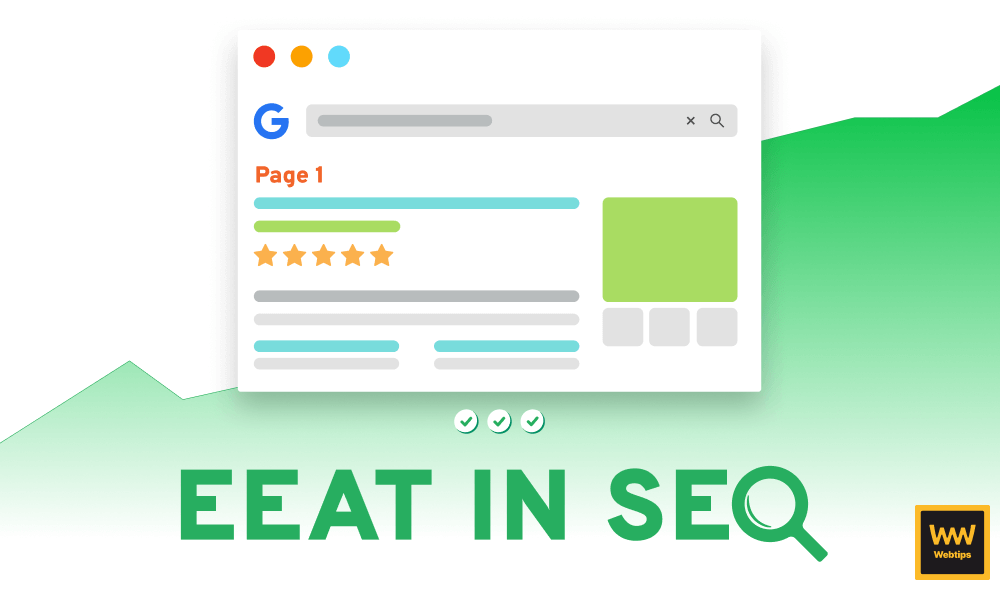
The Importance of EEAT
This lesson is a preview from our interactive course
In today's world, EEAT plays a critical role in determining the ranking and visibility of web pages in search engine results. It does so by evaluating the quality and credibility of content on a website based on a variety of factors, including on-site, off-site, and technical SEO. In this lesson, we'll go in order to understand what each of the letters means in EEAT, and we'll see how it can be improved through practical examples.

Experience and Expertise#
Starting with "EE" (Experience and Expertise) is a crucial aspect of EEAT. EEAT is all about building credibility. Experience and expertise refer to showcasing real-life experiences associated with the topic. It's important to differentiate between experience and expertise:
- Experience: Refers to actual, lived experiences related to the topic discussed on a page. For example, this course mentions several Astro-specific tips that stem from real-world experiences, as I (the author) work with Astro on a daily basis.
- Expertise: On the other hand, Expertise refers to knowledge acquired about a specific topic. It doesn't have to be a real-world experience. For example, an author might have an in-depth understanding of Gymnastics without actively participating in the sport.
We can incorporate experience and expertise into our website by mentioning a relevant personal anecdote, sharing a story that validates a point, or providing clear, in-depth, step-by-step instructions instead of leaving users wondering with a high-level overview. The key is to offer unique, well-researched, and valuable information. A quick and practical example of improving experience and expertise on a site is by adding "About Us" and author pages, where we can showcase:
A summary of what the site aims to cover
Relevant links to important pages such as cornerstone content
Links to social media profiles
A contact form to encourage user engagement
Previous work experience relevant to establishing expertise
Educational background and studies that can further improve the credibility of the author
Cornerstone content refers to the most comprehensive and important content on a website.
One common practice is to include an "About the Author" section at the end of an article to provide additional information about the experience and expertise of the author who created the resource.
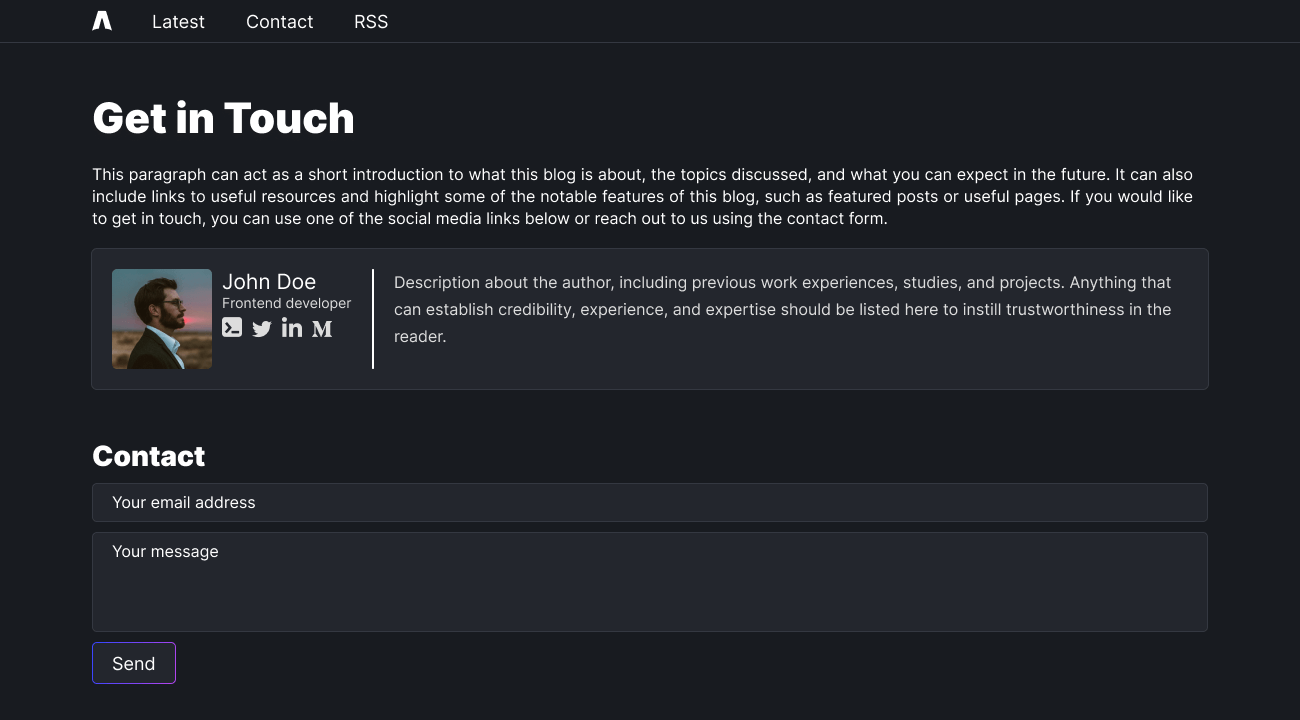
Authoritativeness#
"A" in EEAT stands for Authoritativeness. Authoritativeness is about establishing our website as a trusted resource. It involves building a reputation in your industry and providing well-researched content, supported by examples and other trustworthy sources.
The only way to improve authoritativeness is to become a leader in your industry, so people come to know you, your background, and can accept you as a trustworthy source of information. This happens over time and usually involves link-building and outreach in the form of:
- Guest posting on other authoritative websites.
- Building organic links back to your site through unique, well-researched content.
- Actively engaging with your industry on social platforms.

Trustworthiness#
Last but not least, "T" in EEAT stands for trustworthiness. It involves building user trust by providing reliable, transparent, and credible information. This can be achieved through clear sourcing, citing reputable references, and maintaining a secure website.
Think of writing an article about the importance of responsive design in today's digital age and mentioning how mobile usage has surpassed desktop usage over the last couple of years. Statements like this should be backed up by statistics and other trustworthy sources to verify their accuracy and show they're not just fictitious data. In terms of technical SEO, this would look like the following in HTML:
<a href="https://tinyurl.com/3wyh9w8j">
<blockquote cite="https://tinyurl.com/3wyh9w8j">
Mobile and tablet internet usage exceeds desktop for first time worldwide
</blockquote>
</a>This clearly indicates not only to users but also to Google the source of the information. Keep in mind that trustworthiness applies not only to content on a website but also to technical SEO. To maintain a high level of trustworthiness, ensure that:
- All traffic is served through HTTPS. This is also indicated by a lock icon in the address bar. Connections using unsecured protocols are vulnerable to attacks.
- All transactions are secure and encrypted. If your site accepts payments, ensure and explicitly state to users that payment processing is secure and encrypted.
- Provide ways for users to contact you. Provide actual contact information or a contact form to enable visitors to get in touch with you. Make this information easily accessible, such as in the form of a link to a contact page in your footer on every page.
Setting up HTTPS can be configured through either your CDN or domain hosting platform.
Additionally, providing legal pages such as "Terms and Conditions", "Privacy Policy", "Cookie Policy", "Return and Refund Policy" or other disclaimers can further improve your trustworthiness by providing more transparency about your website.
Conclusion#
In summary, incorporating EEAT principles into our SEO strategy can significantly improve our website's performance in search rankings. By demonstrating expertise, authoritativeness, and trustworthiness, we can not only provide valuable information to our visitors but also establish our website as a reliable and respected source of information within our industry. To better implement EEAT, you can use the checklist below when creating new pages for your website.
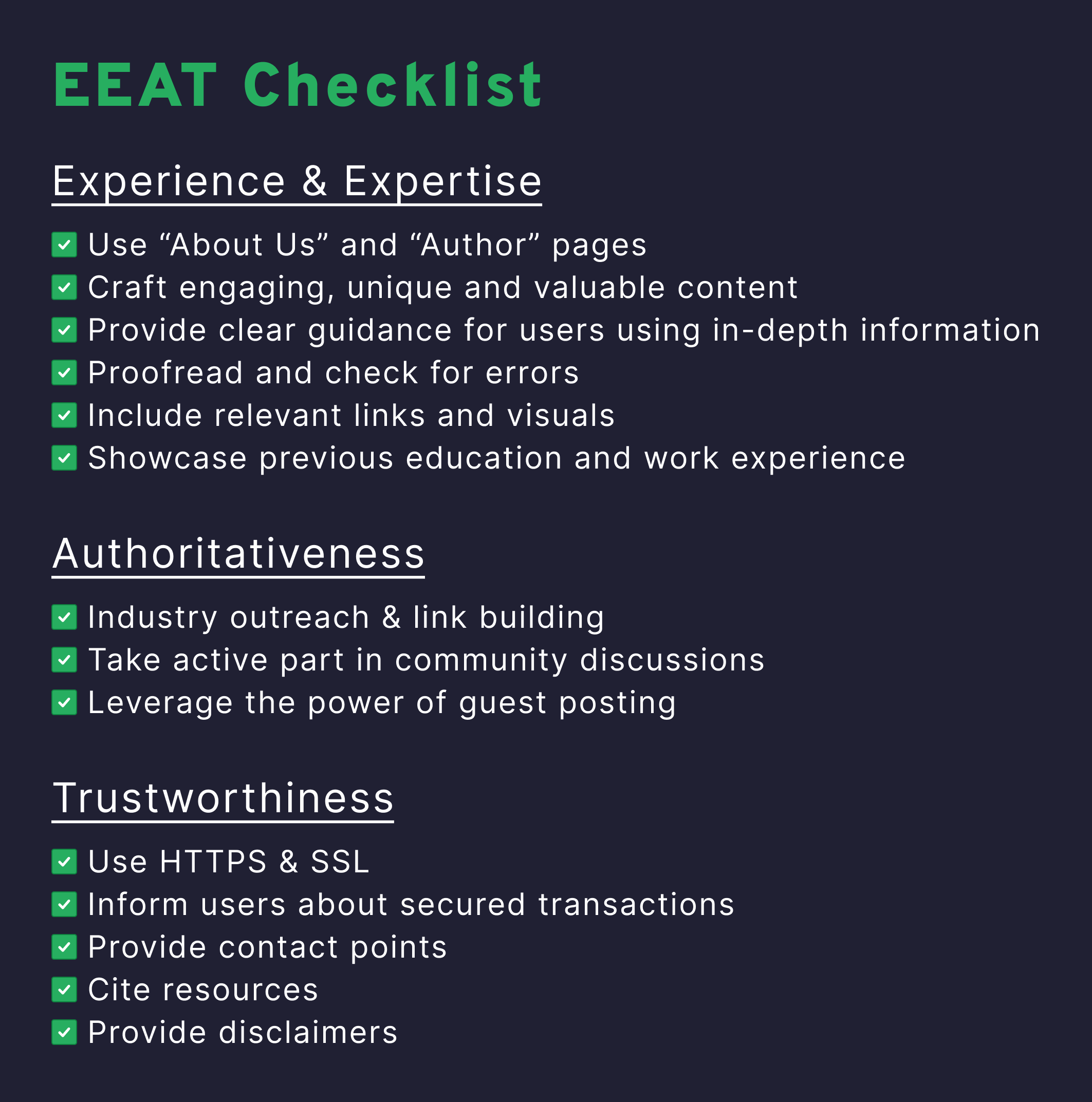
Make sure to incorporate the above-mentioned practices within each piece of content, and ensure that all of your pages establish EEAT to maximize the improvement in traffic for your efforts.

Rocket Launch Your Career
Speed up your learning progress with our mentorship program. Join as a mentee to unlock the full potential of Webtips and get a personalized learning experience by experts to master the following frontend technologies:





